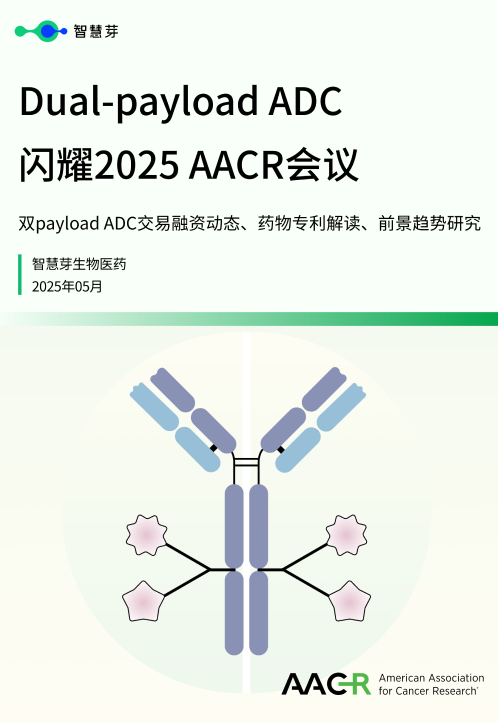预约演示
Advances in antibody therapeutics depend on resin innovation
2023-06-26
并购
The emergence of antibody therapeutics is transforming health care. By targeting protein cells in the body that foster diseases such as cancer and autoimmune disorders, antibodies are better able to attack problematic molecules without causing the often debilitating side effects of traditional treatments, such as chemotherapy and radiation. For example, the monoclonal antibody Rituximab targets proteins on the surface of non-Hodgkin lymphoma and leukemia cancer cells to help a patient’s immune system destroy them.
Biotech and pharmaceutical companies are making significant investments to meet the demand for increasingly effective antibody treatments. A report issued late last year found that the global market for monoclonal antibodies was $208 billion and forecast to reach $647 billion by 2032.
The focus of pharmaceutical companies and medical professionals on antibody therapeutics has increased emphasis on ways to improve their development. One area that has long needed improvement is the availability and performance of chromatographic resins, which are crucial in the development and refinement of antibody treatments. Chromatographic resins are important in the development of antibody therapeutics because they separate and purify monoclonal antibodies from the proteins, DNA and impurities that are part of the development process.
Resin availability and innovation not keeping pace with antibody development
For many years, however, pharmaceutical and biotech firms were constrained because they were limited to mostly Protein A resins for purification. More recently, an overall lack of resin supplies has limited antibody research. Limited supplies weren’t the only challenge; another issue was that the available resins had not improved anywhere near as quickly as the antibodies themselves. “The people who are producing antibodies are often making giant moves in terms of what they can produce and how much they can produce from their expression systems,” said Aaron Moulin, a field application specialist for Purolite, a manufacturer of separation, extraction and purification technology, which Ecolab acquired in 2021. “While that has been sometimes moving by leaps and bounds, the purification improvements have been more incremental.”
That slower pace of purification innovation becomes even more apparent as researchers move away from traditional antibodies to bispecific and multispecific antibodies, which are developed to simultaneously target multiple cells or molecules. While these more advanced antibodies promise to improve the efficacy of traditional antibodies, purification is a real challenge. “These are much more difficult to purify, and the number of options companies have to purify are much more limited,” Moulin said. “When you’re working on an Fc-fusion protein and your first capture step gives you only 30% recovery, that makes for a very expensive and nonattractive option. There’s an unmet need in the market for efficient ways to purify those types of therapeutics.”
A step forward in Protein A resin technology
But that is starting to change, thanks to new products such as Praesto Jetted A50 HipH from Purolite, which is the only commercially available Protein A resin designed for the elution of Fc-containing molecules at higher pH levels. There are a host of reasons the wider elution range is important for the development of bispecific and multispecific antibodies. A reduction in the risk of degradation at lower pH and increased recovery rates are two significant improvements.
“Fusion proteins tend to be sensitive to acid at low pH levels because everything tends to aggregate when there’s an Fc group at a low pH,” Moulin said. “Having the ability to elute between pH 3 and 5 gets you away from a lot of those really acidic regimes where you see problems very much exacerbated.” Recovery rates in simple Fc-fusion proteins also increase significantly with a wider elution range. For instance, while a traditional recovery rate for Fc-fusion proteins is about 30%, the ability to elute at a higher pH boosts recoveries to as high as 95%.
Another benefit comes from the fact that, as the name indicates, Praesto Jetted A50 HipH resins are produced using a patented technology called Jetting. Purolite has long used Jetting to manufacture synthetic beads. What’s new is the production of agarose beads using Jetting technology, which Purolite uses to manufacture the Praesto range of Protein A and ion exchange chromatography resins. Leveraging Jetting technology translates into speed and versatility, which benefits biotech and pharmaceutical company research and manufacturing. “We are able to turn things around quickly, make smaller batches more simply and develop prototypes and testing models faster,” Moulin said. “When you can do things faster, you’re going to be able to test more things in a shorter amount of time and get treatments to market more quickly than competitors.”
Another benefit of using Jetting technology: consistent bead size. Traditionally, agarose resins have been produced through batch emulsification. While the technique is effective, it also produces beads of varying sizes. “Most of what you make will be about the same size, but you still will have a significant number of beads that are smaller and a significant number of beads that are larger,” Moulin said. “That has real-world implications in terms of pressure/flow and ease of packing. A wide distribution of particle sizes makes all those things more difficult.”
The release of Praesto Jetted A50 HipH by Purolite gives companies a ready supply of consistently sized resins needed to move quickly and scale their antibody therapeutics. But it’s also a sign that Purolite is committed to increasing the pace of innovation in antibody product development. “The story for Purolite doesn’t end here. We are focused on becoming resin innovators and have the technology foundation, support, investment and regulatory experience of Ecolab behind us,” Moulin said. “We’re going to be moving forward, continuing to innovate and developing new resins for the global market.”
'
更多内容,请访问原始网站
文中所述内容并不反映新药情报库及其所属公司任何意见及观点,如有版权侵扰或错误之处,请及时联系我们,我们会在24小时内配合处理。
靶点
-药物
Eureka LS:
全新生物医药AI Agent 覆盖科研全链路,让突破性发现快人一步
立即开始免费试用!
智慧芽新药情报库是智慧芽专为生命科学人士构建的基于AI的创新药情报平台,助您全方位提升您的研发与决策效率。
立即开始数据试用!
智慧芽新药库数据也通过智慧芽数据服务平台,以API或者数据包形式对外开放,助您更加充分利用智慧芽新药情报信息。




